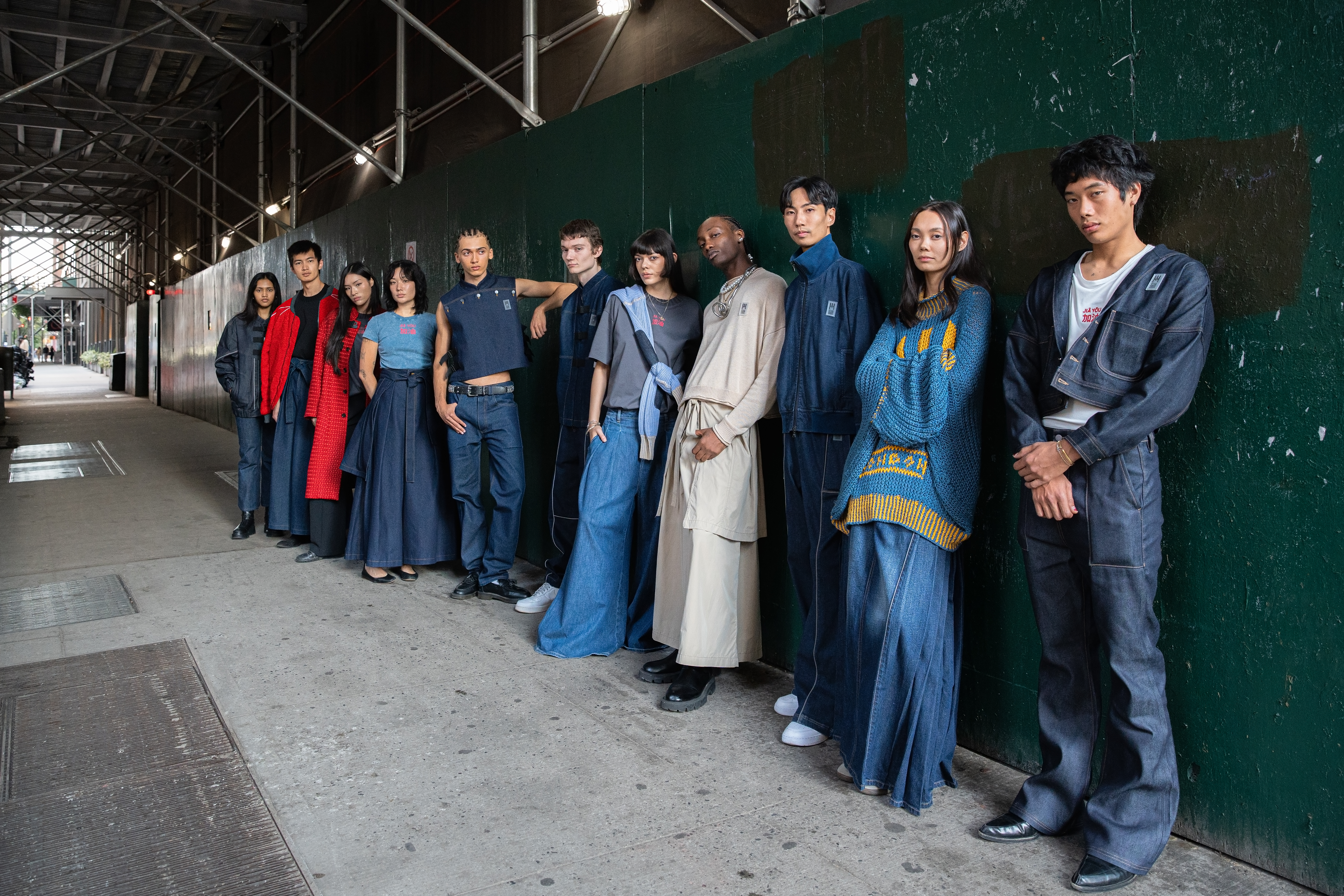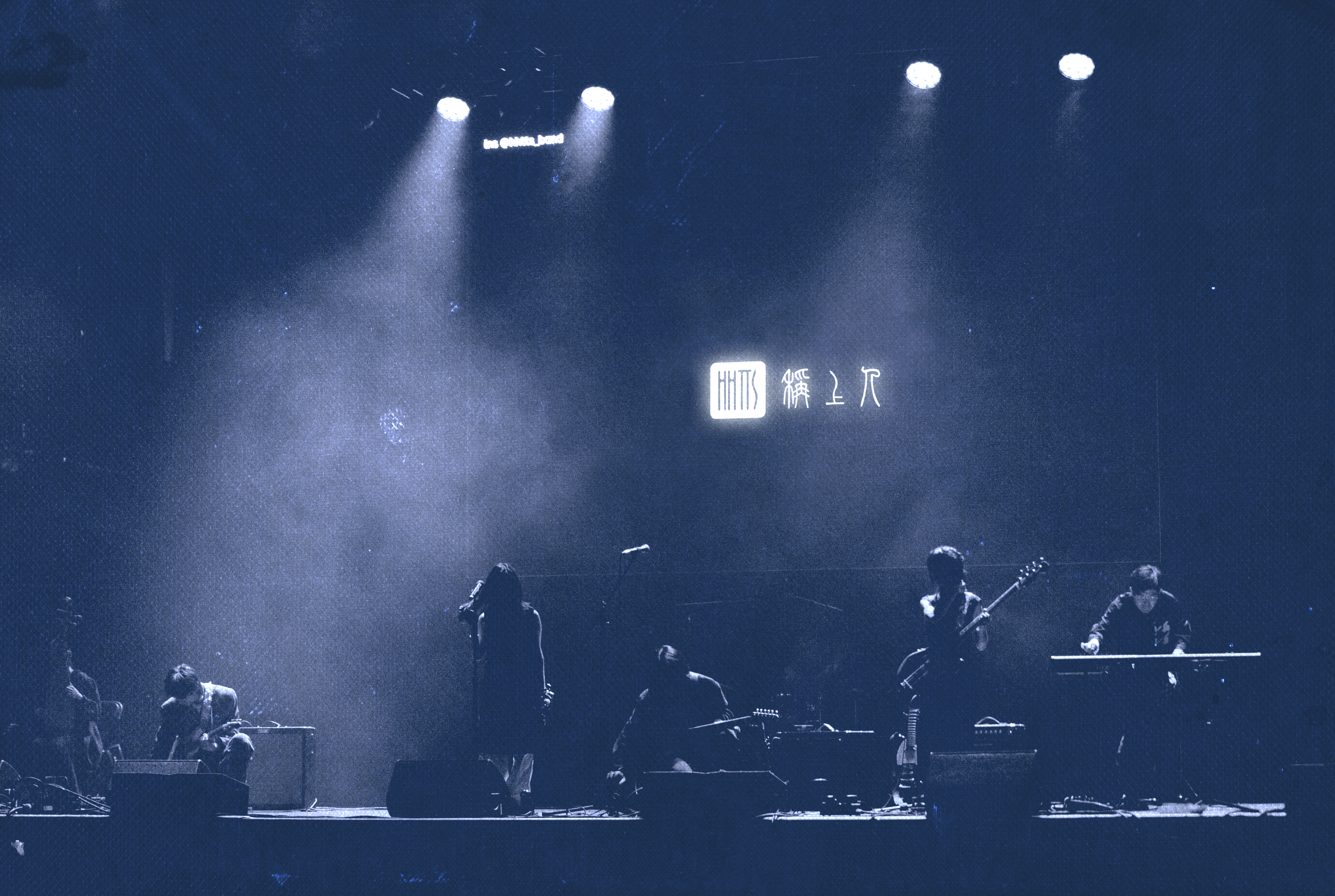China Designers is a biweekly series that showcases the wide spectrum of creativity in Chinese fashion design. From small designers to big brands, these names are changing the connotations of “Made in China,” one collection at a time. Write to us if you have a suggestion or submission.
Gender equality. Freedom of speech. The unchecked, society-altering growth of social media and influencer culture. No matter where you’re from, there are plenty of things to be mad — or at least, moderately irritated — about in today’s society. Designers Shao Yuner and Zhou “Stef” Puzhen took to fashion as their way of saying “no” to it all.
Born in Chongqing — a municipality of more than 30 million people bordering Sichuan province — the two New York City-based designers behind indie label Refuse Club weave a dash of social commentary in with their lace and Lycra. The brand takes its name from Salon des Refusés, a famous 1863 exhibition culling artworks that had been rejected by the prestigious (and notoriously stuffy) Paris Salon.

After graduating from Parsons in 2017, Shao and Zhou set up their label to reject not only the traditional “rules” of setting up a label in the first place, but also the bigger societal problems they felt plagued their generation.
Their first collection for AW19 addressed the administrative crackdown on China’s #MeToo movement — which like the West’s took social media by storm, but was later forced to use puns and workarounds to evade censorship.
Related:
 Suppression, Perseverance and Anger: #MeToo in China Gains Momentum Against the OddsArticle Jul 30, 2018
Suppression, Perseverance and Anger: #MeToo in China Gains Momentum Against the OddsArticle Jul 30, 2018
In the collection, screen-printed messages replicating a 404 error are superimposed over qipao dresses and blazers made from traditional Chinese jacquard. “We chose to discuss #MeToo because many Asian people we know think that feminism has become merely ‘overcorrection,’ without really understanding it,” says Shao. “But these abuses are also happening in China. We don’t want the next generation to be afraid to speak out.”
Zhou told Teen Vogue this year that their main goal with Refuse Club is to address Chinese social problems, going so far as to open their own WeChat account to discuss these issues in their native Chinese.
Their second, more whimsical collection — mixing loose, feminine fabrics with workwear silhouettes, and adorning choice pieces with hand-drawn prints — trains its eye on Chinese influencer, or wanghong (网红) culture. The two designers criticize mainstream beauty by celebrating its “antithesis,” gleaning inspiration from a video app called Kwai (Kuaishou) that is commonly used in rural China.
“Each print this season is inspired by something on the internet this season that we thought is fun,” says Shao. She references one viral video that featured two people dancing and pointing at their watches, which became a much-repeated style of dance on Kwai. “People think watches show their social status, and transform that into a dance, which is interesting.”

“We found that nowadays, people tend towards one type of beauty and fashion,” says Shao, referring to China’s notoriously monolithic beauty standards, a frequent source of debate on social media.
Related:
 Chinese Model’s Freckled Face Divides NetizensSome say the images “demonize” Asian beauty, while others applaud Zara for the aesthetic decisionArticle Feb 19, 2019
Chinese Model’s Freckled Face Divides NetizensSome say the images “demonize” Asian beauty, while others applaud Zara for the aesthetic decisionArticle Feb 19, 2019
In contrast, the designers felt that users on Kwai — considered a more niche platform than TikTok (Douyin in Chinese) — were more fun, free, and diverse in their thinking and aesthetics. “Influencers on Kwai often have their own unique imagination of what ‘fashion’ or ‘city culture’ is,” says Shao, “which we find more interesting.”
Shao says that the positive reception of their work in China has actually surprised her, noting that young followers are particularly “obsessed with our qipao dress” and how Refuse Club reworks the garment into daily wear. She attributes this to a growing interest among younger generations in all things “made in China.”

Shao and Zhao with their SS20 models
“Fashion has been dominated by Western society for so many years,” says Shao. “Now I think young generations are open and curious about Chinese design, and also more appreciative of traditional styles. And we are excited about that.”
Follow Refuse Club on Instagram.
All images courtesy Refuse Club.
















